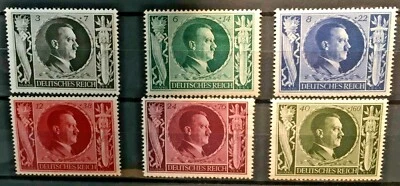Good stamp. The Protectorate of Bohemia and Moravia (German: Protektorat Böhmen und Mähren; Czech: Protektorát Čechy a Morava) was a protectorate of Nazi Germany established on 16 March 1939 following the German occupation of Czechoslovakia on 15 March 1939. Earlier, following the Munich Agreement of September 1938, Nazi Germany had incorporated the Czech Sudetenland territory as a Reichsgau (October 1938). The protectorate's population was majority ethnic Czech, while the Sudetenland was majority ethnic German. Following the establishment of the independent Slovak Republic on 14 March 1939, and the German occupation of the Czech rump state the next day, Adolf Hitler established the protectorate on 16 March 1939 by a proclamation from Prague Castle. The German government justified its intervention by claiming that Czechoslovakia was descending into chaos as the country was breaking apart on ethnic lines, and that the German military was seeking to restore order in the region. Czechoslovakia at the time under President Emil Hácha had pursued a pro-German foreign policy; however, upon meeting with the German Führer Adolf Hitler (15 March 1939), Hácha submitted to Germany's demands and issued a declaration stating that in light of events he accepted that Germany would decide the fate of the Czech people; Hitler accepted Hácha's declaration and declared that Germany would provide the Czech people with an autonomous protectorate governed by ethnic Czechs. Hácha was appointed president of the protectorate the same day. The Protectorate was a nominally autonomous Nazi-administered territory which the German government considered part of the Greater German Reich. The state's existence came to an end with the surrender of Germany to the Allies in 1945.































 Your request is processing... Please Wait
Your request is processing... Please Wait